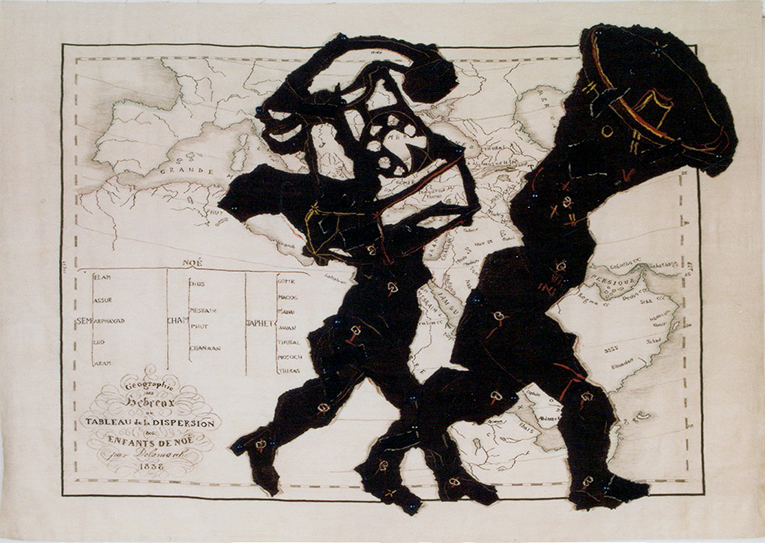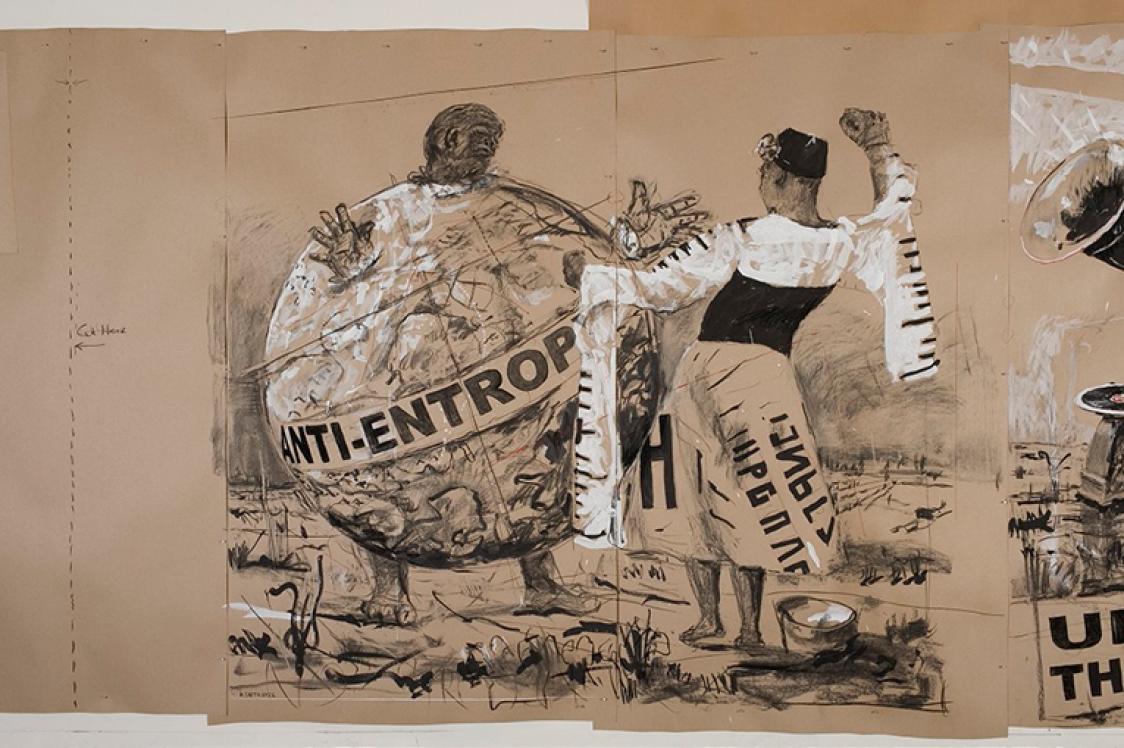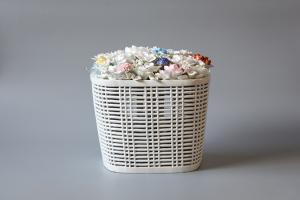WILLIAM KENTRIDGE: TAPESTRIES
PHILADELPHIA MUSEUM OF ART
Artist(s): William Kentridge
Curator(s):Carlos Basualdo
Dates: Till April 6, 2008
Philadelphia Museum of Art hosts the first U.S. exhibition of tapestries by South African artist William Kentridge (born 1955), whose work, encompassing drawing, video, sculpture and theatre, has made him one of the most eloquent artistic voices to emerge in South Africa.
In conjunction with the exhibition, the Museum presents a series of discussions and readings as part of Art and Social Transformation - a new program at the Philadelphia Museum of Art devoted to social and political dimensions of art making - that will amplify the context of Kentridge's practice by exploring themes of landscape, literature, and South African history.
William Kentridge: Tapestries (on view through April 6, 2008) include 11 large-scale tapestries from a series conceived by and executed under Kentridge's artistic direction between 2001 and 2007. On loan from public and private collections in Europe, South Africa, and the United States, the tapestries and 23 additional works - etchings, bronze sculptures, drawings, and an artist's book- - reflect the development of Kentridge's iconic images of porters and processional characters that have come to represent the transitional conditions that have plagued South Africa both under the apartheid regime and after its decline in the mid-1990s.
The exhibition features 11 of Kentridge's Puppet Drawings of 2000 that were the point of departure for the tapestries on view. To transfer images from drawings into tapestries, Kentridge worked in close collaboration with the Stephens Tapestry Studio in Diepsloot, a suburb of Johannesburg, whose mission focuses on weaving as an artistic medium. The Puppet Drawings were photographed and enlarged to make photographic templates from which studio director Marguerite Stephens drew cartoons the size of the tapestries. Using mohair weft that had hand-carded, spun and dyed in Swaziland, studio weavers worked on a vertical loom. Kentridge was intimately involved in producing the tapestries--from, in some instances, redrawing atop the enlarged photographs to selecting the dyes to use on the mohair.

"Kentridge initially thought of his tapestries as 'permanent projections,'" said Carlos Basualdo, the Museum's Curator of Contemporary Art, who organized the exhibition and oversees the Notations installations. "While they evoke the moving image, his tapestries also illuminate the centrality of drawing in his practice. He uses the language of one medium to talk about another medium, while at the same time dealing with societies that are themselves in a state of transition." Kentridge's motifs evoke daily existence in the face of adversity, speaking both to South Africa specifically and to the world at large.
William Kentridge: Tapestries is the fourth and most ambitious of the Museum's ongoing Notations series, and it occupies three galleries (the Gisela and Dennis Alter Gallery (176) and adjacent galleries 172 and 173). Notations is an ongoing series of gallery installations named after the 1968 book by American composer, writer, and visual artist John Cage, who was widely celebrated for his experimental approach to the arts. Cage's Notations was an international and interdisciplinary anthology of scores by avant-garde musicians, with contributions from visual artists and writers. At the same time, it was an exhibition in book form--in which the scores doubled as drawings. The "Notations" series serves as a flexible tool to explore contemporary art in the Museum's expanding collection, allowing for experimentation with various exhibition alternatives.
The Art and Social Transformation lecture series in conjunction with William Kentridge: Tapestries include:
December 12, 2007: William Kentridge in Conversation with Susan Stewart (poet, critic, and Annan Professor of English at Princeton University) from 6:30 to 7:30 p.m.
February 8, 2008: Zakes Mda, South African author of The Heart of Redness, Madonna of Excelsior, and others. 6:00 p.m. in Gallery 176. Free after Museum admission.
March 14, 2008: Ivan Vladislavic, South African author of Portrait with Keys: The City of Johannesburg Unlocked and others. 6:00 p.m. in Gallery 176. Free after Museum admission.
CATALOGUE
William Kentridge: Tapestries is accompanied by a catalogue co-published by the Museum and Yale University Press (118 p.). A sourcebook on Kentridge’s work in the medium, it explores the artist’s tapestries in relation to his work in other media and the connection between the tapestries and South African literature. The catalogue includes over 120 high-quality color reproductions, among them images of the related drawings and sculptures and documentation of the weaving process. It contains essays by Carlos Basualdo, South African writer and critic Ivan Vladislavic, Italian art critic Gabriele Guercio, and Okwui Enwezor, leading scholar on African art who is Dean of Academic Affairs and Senior Vice President at San Francisco Art Institute. It will be available for purchase in the Museum Bookstore, in the Museum Store online at http://www.philamuseum.org or by calling 800 329-4856.
SUPPORT:
Support for Notations/William Kentridge: Tapestries is provided by the Philadelphia Exhibitions Initiative, a program of the Philadelphia Center for Arts and Heritage, funded by The Pew Charitable Trusts, and administered by The University of the Arts. Additional funding was provided by a generous gift from Dina and Jerry Wind. The Art and Social Transformation lecture series is made possible by a generous gift from Dina and Jerry Wind.
Contact:
Philadelphia Museum of Art
Benjamin Franklin Parkway
at 26th Street
Philadelphia, PA 19130
(215) 763-8100
www.philamuseum.org
Image Credits:
1. William Kentridge, Anti - Entropy, 2011
2. William Kentridge, Porter Series: Geographie des Hebreux ou Tableau de la dispersion des Enfants de Noe, 2005, Tapestry



